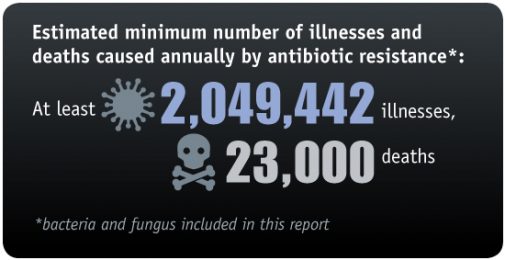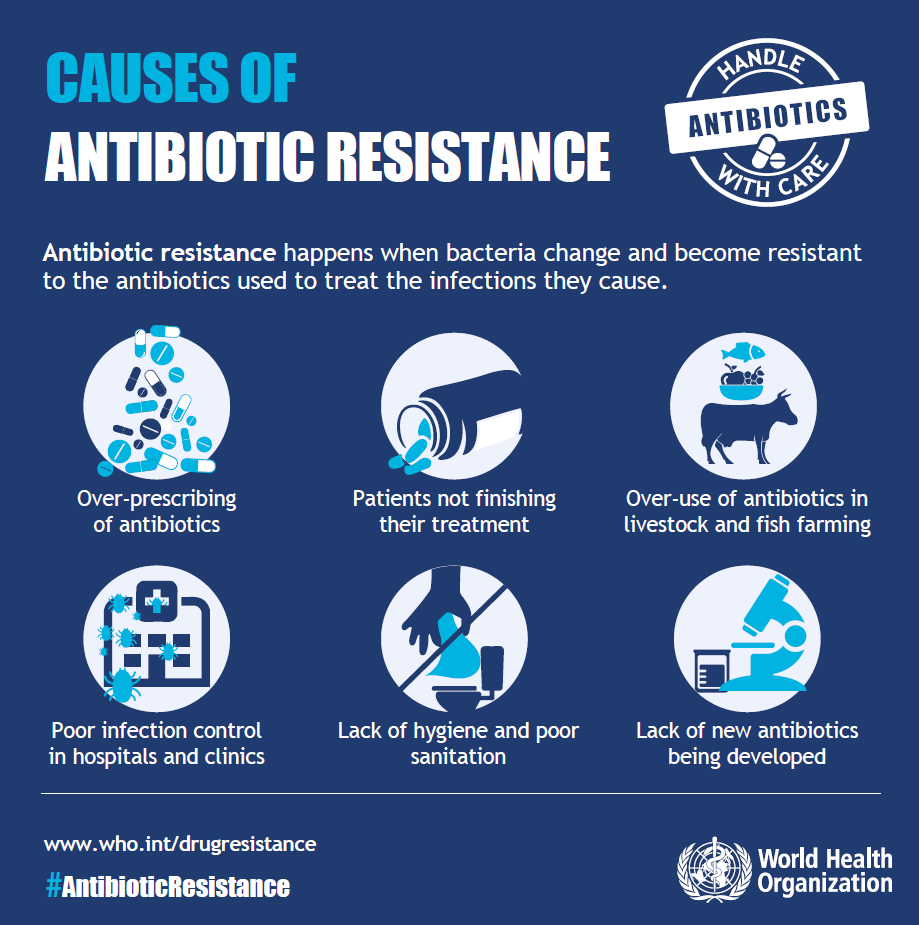What you need to know about antibiotic resistance

Get Smart About Antibiotics Week occurs every year in November to raise awareness of the threat of antibiotic resistance and the importance of appropriate antibiotic prescribing and usage.
According to the Centers for Disease Control and Prevention (CDC), at least two million people in the United States become infected with bacteria that are resistant to antibiotics. Statistics also show that 23,000 people die as a direct result of those infections.
Dr. James Malow, an infectious disease and internal medicine physician with Advocate Medical Group in Chicago, explains that antibiotic resistance occurs when bacteria that causes infections become resistant to common antibiotics that we typically use to treat the patient.
“Antibiotic resistance occurs when the bacteria in our body is exposed to the antibiotic multiple times, which causes them to develop resistance to that medication over time,” he says. “The more exposure to antibiotics you incur, the more likely your body becomes resistant to them.”
Dr. Malow says the increased exposure to antibiotics causes the bacteria to change its genetic makeup in order to survive.
Antibiotics are the most commonly prescribed drug. According to the CDC, up to 50 percent of prescriptions are either not necessary or not optimally prescribed.
Due to these astonishing statistics, the White House announced an executive order on September 18, 2014 declaring that the federal government will work domestically as well an internationally to detect, prevent and control illness and death related to antibiotic-resistant infections.
Get Smart About Antibiotics Week dedicates time to antibiotic stewardship in the community. Antibiotic stewardship involves the development, promotion and implementation of activities to ensure the appropriate use of antibiotics.
Through this program, the CDC is hoping to educate the community on how antibiotics are used and improve the prescription process. They also hope to slow the rise of antibiotic resistant infections.
Dr. Malow suggests these tips in order to help prevent antibiotic resistance:
- Patients and doctors should work together. Viral infections like the common cold and flu aren’t treatable with antibiotics, so avoid asking your doctors to prescribe antibiotics to address these issues.
- Do not take antibiotics that are not prescribed to you just because you think you have the same infection as another person. Talk to your doctor instead to determine if antibiotics are right for you.
- Patients also need to be aware of the potential harm of continued antibiotic use, so it’s important that antibiotics are taken correctly the first time. When taking antibiotics, do not skip doses, and make sure to follow the directions about dose and duration from your doctor.
- Antibiotic resistance is also a problem in agriculture. Learn more about how you can make a difference by supporting responsible antibiotic use on the farm.
Learn more about antibiotic resistance on the CDC resource website.
Related Posts
Comments
One Comment
About the Author
Tiffany Nguyen, health enews contributor, is a public affairs and marketing intern at Advocate Support Centers in Downers Grove, IL. She is a graduate of Northern Illinois University with a degree in public health. She is currently pursuing a Master’s in Business Administration focusing specifically on healthcare management at Lewis University. Tiffany enjoys hanging out with her friends, exploring new restaurants, and binge watching Netflix shows.



















So what is considered multiple times? And in what time frame?